- Home
- Jared Diamond
Upheaval: Turning Points for Nations in Crisis Page 18
Upheaval: Turning Points for Nations in Crisis Read online
Page 18
Among the issues of crisis and change to keep in mind as you read the following pages, one is of course the comparison between Indonesia and Chile. Both countries experienced a breakdown of political compromise, a leftist effort to gain control of the government, and a military coup that ended that effort and installed a long-lasting dictatorship. Both countries illustrate the role of not one but two successive leaders, with distinctive but contrasting personalities. In achieving national reconciliation after the massacre of one political group by its opponents, Indonesia proves to lie at the opposite extreme from Finland, with Chile in the middle. More than any other country discussed in this book, you’ll see that Indonesia, our youngest country, illustrates the process of successfully building a national identity.
To understand what happened in Indonesia’s crisis of 1965 and its aftermath, let’s begin with some background. Indonesia is a new country that didn’t become independent until 1945, and that didn’t even become unified as a colony until around 1910. It’s tropical, lies on the equator between New Guinea and Australia on the east and Asia on the west, and has high mountains, including many active volcanoes. One of them, Krakatoa, is famous for the most catastrophic eruption in recent history (1883), an eruption that blew out almost the whole island and injected enough ash into the atmosphere to change the world’s climate for the following year. Of Indonesia’s islands, the best known are Java, Bali, Sumatra, and Sulawesi, plus the islands of Borneo and New Guinea that Indonesia shares with other countries.
Geographically, Indonesia is the most splintered country in the world, with thousands of inhabited islands scattered over an expanse of 3,400 miles from west to east. For most of the last 2,000 years, there were indigenous states on some Indonesian islands. But none of them came to control most of the Indonesian archipelago, nor was there a name or a concept for what we know today as Indonesia. Linguistically, Indonesia is one of the world’s most diverse countries, with more than 700 different languages. It is also religiously diverse: while most Indonesians are Muslims, there are also large Christian and Hindu minorities, as well as Buddhists, Confucians, and followers of local traditional religions. Although there have been religious violence and rioting, they have been on a much smaller scale than in South Asia and the Middle East. Many Indonesians of different religions are relatively tolerant of one another. I have been in parts of Indonesia where Christian and Muslim villages were next to each other, and I didn’t even recognize what was the religion of some particular village that I happened to be in, until I noticed a mosque or church.
Beginning after 1510, the Portuguese, then (from 1595 onwards) the Dutch, and then the British attempted to establish colonies in the island chain that is now Indonesia. British control eventually became confined to parts of Borneo, and the only Portuguese colony that survived was in the eastern half of the island of Timor. The most successful colonists were the Dutch, concentrated on the island of Java, which had by far the largest native population (more than half of the population of modern Indonesia). In the 1800’s, in order to make their colonial efforts pay for themselves and then produce a profit, the Dutch developed export plantations on Java and Sumatra. But it was only around 1910, more than three centuries after their arrival in the Indonesian archipelago, that the Dutch gained control of the whole far-flung island chain. As an example of how long much of the archipelago remained unexplored by the Dutch, it wasn’t until that year of 1910 that a Dutch governor discovered that the eastern Indonesian island of Flores and the nearby small island of Komodo are home to the world’s largest lizard, the so-called Komodo dragon. Although it’s up to 10 feet long and weighs up to several hundred pounds, it had remained unknown to Europeans for four centuries.
It should be emphasized that the word “Indonesia” didn’t even exist until it was coined by a European around 1850. The Dutch called their colony the “Indies,” the “Netherlands Indies,” or the “Dutch East Indies.” The archipelago’s inhabitants themselves did not share a national identity, nor a national language, nor a sense of unity in opposition to the Dutch. For example, Javanese troops joined Dutch troops to conquer the leading state on the island of Sumatra, a traditional rival of Javanese states.
In the early 1900’s the Dutch colonial government began efforts to switch from a purely exploitative policy for their colony to what they termed an “ethical policy”—i.e., finally trying to do some good for Indonesians. For example, the Dutch opened schools, built railroads and irrigation projects on Java, set up local government councils in the main towns, and attempted to relieve Java’s overpopulation by supporting emigration to less densely populated outer islands (against the wishes of those islands’ native populations). But those efforts of Dutch ethical policy produced limited results—partly because the Netherlands itself was too small to put much money into Indonesia; and partly because the efforts of the Dutch, as well as of subsequent independent Indonesia, to improve people’s lives were frustrated by rapid population growth, creating more mouths to feed. Indonesians today consider the negative effects of Dutch colonialism far to have outweighed the positive effects.
By around 1910, increasing numbers of inhabitants of the Dutch East Indies were developing the beginnings of a “national consciousness.” That is, they began to feel that they were not just inhabitants of their particular Dutch-governed sultanate in some part of Java or Sumatra, but that they belonged to a larger entity called “Indonesia.” Indonesians with those beginnings of a wider identity formed many distinct but often overlapping groups: a Javanese group that felt culturally superior, an Islamic movement seeking an Islamic identity for Indonesia, labor unions, a communist party, Indonesian students sent to the Netherlands for education, and others. That is, the Indonesian independence movement was fragmented along ideological and geographic and religious lines, presaging problems that continued to plague Indonesia after independence.
The result was not only strikes, plots, and agitation against the Dutch, but also conflict between those Indonesian groups, making for a confused situation. Their actions against the Dutch nevertheless reached the point that in the 1920’s the Dutch adopted a policy of repression and sent many of the leaders to what was in effect a concentration camp, in a remote disease-plagued area of Dutch New Guinea.
An important contribution to eventual Indonesian unity was the evolution and transformation of the Malay language, a trade language with a long history, into Bahasa Indonesia, the shared national language of all Indonesians today. Even the largest of Indonesia’s hundreds of local languages, the Javanese language of Central Java, is the native language of less than one-third of Indonesia’s population. If that largest local language had become the national language, it would have symbolized Java’s domination of Indonesia and thereby exacerbated a problem that has persisted in modern Indonesia, namely, fear of Javanese domination on the part of Indonesians of other islands. The Javanese language has the additional disadvantage of being hierarchy-conscious, with different words used in speaking to people of higher or lower status. Today, I share with Indonesians their appreciation for the advantages of the wonderful Bahasa Indonesia as their national language. It’s easy to learn. Only 18 years after Indonesia took over Dutch New Guinea and introduced Bahasa there, I found it being spoken even by uneducated New Guineans in remote villages. Bahasa’s grammar is simple but supple at adding prefixes and suffixes to many word roots, in order to create new words with immediately predictable meanings. For example, the adjective meaning “clean” is “bersih,” the verb “to clean” is “membersihkan,” the noun “cleanliness” is “kebersihan,” and the noun “cleaning up” is “pembersihan.”
After Japan declared war on the United States in December 1941 and began its expansion throughout the Pacific Islands and Southeast Asia, it rapidly conquered the Dutch East Indies. The oil fields of Dutch Borneo, along with Malayan rubber and tin, were in fact a major motive behind Japan’s declaring war, perhaps the biggest single motive, because Japan itself la
cked oil and had depended on American oil exports, which the American president Roosevelt had cut off in retaliation for Japan’s war against China and occupation of French Indo-China. The Borneo oil fields were the nearest alternative source of oil for Japan.
At first, Japanese military leaders occupying the Dutch East Indies claimed that Indonesians and Japanese were Asian brothers in a shared struggle for a new anti-colonial order. Indonesian nationalists initially supported the Japanese and helped to round up the Dutch. But the Japanese mainly sought to extract raw materials (especially oil and rubber) from the Dutch East Indies for the Japanese war machine, and they became even more repressive than had been the Dutch. As the war turned against the Japanese, in September 1944 they promised independence to Indonesians, though without setting a date. When Japan did surrender on August 15, 1945, only two days later Indonesians declared independence, ratified a constitution on the next day, and founded local militias. But they quickly discovered that the defeat of the Dutch by the Japanese, then the promise of independence by the Japanese, and finally the defeat of the Japanese by the U.S. and its allies did not ensure independence for Indonesia. Instead, in September 1945 British and Australian troops arrived to take over from the Japanese, and then Dutch troops arrived with the aim of restoring Dutch control. Fighting broke out that pitted British and Dutch troops against Indonesian troops.
The Dutch, invoking the ethnic diversity and huge territorial extent of the Indonesian archipelago, and probably driven by their own motive of “divide and rule” to retain control, promoted the idea of a federation for Indonesia. They set up separate federal states within areas that they reconquered. In contrast, many Indonesian revolutionaries sought a single unified republican government for all of the former Dutch East Indies. By a preliminary agreement reached in November 1946, the Dutch recognized the Indonesian Republic’s authority—but only in Java and Sumatra. However, by July 1947 the Dutch became exasperated and launched what they termed a “police action,” with the goal of destroying the Republic. After a cease-fire, then another Dutch “police action,” and United Nations and U.S. pressure, the Dutch gave way and agreed to transfer authority to the Republic. The final transfer took place in December 1949—but with two big limitations that infuriated Indonesians and that took them 12 years to overturn. One limitation was that the Dutch did not yield the Dutch half (the western half) of the island of New Guinea. Instead, they retained it under Dutch administration, on the grounds that New Guinea was much less developed politically than was the rest of the Dutch East Indies, that it was not even remotely ready for independence, and that most New Guineans are ethnically as different from most Indonesians as either group is from Europeans. The other limitation was that Dutch companies such as Shell Oil maintained ownership over Indonesian natural resources.
Dutch efforts to re-establish control over Indonesia between 1945 and 1949 were carried out with brutal methods that my Indonesian colleagues still recounted to me with bitterness 30 years later, and that were vividly depicted in the paintings of Indonesian history in my Indonesian hotel lobby in 1979. (For instance, one of those paintings showed two Dutch soldiers raping an Indonesian woman.) Simultaneously, other brutal methods were employed by Indonesians against other Indonesians, because within Indonesia itself there was much resistance to the Indonesian Republic, viewed by many eastern Indonesians and Sumatrans as Javanese-dominated. Again, I still heard much resentment and longing for political separation from Indonesia on the part of my non-Javanese Indonesian friends in the 1980’s. There was also opposition to the Republican leadership from Indonesian communists, culminating in a 1948 revolt crushed by the Republican Army that killed at least 8,000 Indonesian communists—a foretaste of what was to happen on a much larger scale after the failed coup of 1965.
The new nation faced crippling problems that had been carried over from the pre-independence era, and some of which now became further exacerbated. As an ex-colony long governed by the Netherlands for the Netherlands’ benefit, independent Indonesia began its existence greatly underdeveloped economically. Population growth (at nearly 3% per year during the 1960’s) continued to place a heavy burden on the economy after independence, as it had in Dutch times. Many Indonesians still lacked a sense of national identity and continued to identify themselves as Javanese, Moluccans, Sumatrans, or members of some other regional population, rather than as Indonesians. The Indonesian language that would eventually contribute to Indonesian unity was not yet widely established; instead, the 700 local languages were used. Those who did consider themselves Indonesian differed in their visions for Indonesia. Some Indonesian Muslim leaders wanted Indonesia to become an Islamic state. The Indonesian Communist Party wanted Indonesia to become a communist state. Some non-Javanese Indonesians wanted either much regional autonomy or else outright regional independence, and staged regional revolts, which the Republic’s military eventually defeated.
The military itself was a focus of schisms, and of debates about its role. Should the military be controlled, as in other democracies, by civilian politicians, of whom Indonesian military officers were becoming increasingly suspicious? Or should the military instead be more autonomous and pursue its own policies for Indonesia? The military saw itself as the savior of the revolution, the bulwark of national identity, and demanded a guaranteed voting block in parliament. The civilian government, on the other hand, sought to save money by eliminating military units, reducing the size of the officer corps, and pushing soldiers out of the military and off the government payroll. There were also internal disagreements between branches of the armed forces, especially disagreements pitting the air force against the other branches. There were disagreements between army commanders themselves, especially between revolutionary regional commanders and conservative central commanders. Military leaders extorted money from other Indonesians and from businesses for army purposes, raised money by smuggling and by taxing radio ownership and electricity, and increasingly took over regional economies, thereby institutionalizing the corruption that remains today one of Indonesia’s biggest problems.
Indonesia’s founding president, Sukarno (1901–1970), had begun his political career already in Dutch times as a nationalist leader against the Dutch colonial government (Plate 5.1). (Like many Indonesians, Sukarno had only a single name, not a first name and a family name.) The Dutch sent him into exile, from which the Japanese brought him back. It was Sukarno who issued Indonesia’s Proclamation of Independence on August 17, 1945. Well aware of Indonesia’s weak national identity, he formulated a set of five principles termed Pancasila, which to this day serves as an umbrella ideology to unify Indonesia and was enshrined in the 1945 constitution. The principles are broad ones: belief in one god, Indonesian national unity, humanitarianism, democracy, and social justice for all Indonesians.
As president, Sukarno blamed Indonesia’s poverty on Dutch imperialism and capitalism, abrogated Indonesia’s inherited debts, nationalized Dutch properties, and turned over the management of most of them to the army. He developed a state-centered economy that the army, the civil bureaucracy, and Sukarno himself could milk for their benefit. Not surprisingly, Indonesian private enterprise and foreign aid both declined. Both the U.S. and the British governments became alarmed and sought to destabilize Sukarno’s position, just as the U.S. had tried to destabilize Allende in Chile. Sukarno responded by telling the U.S. to “go to hell with your aid”; then in 1965 he expelled the American Peace Corps and withdrew from the United Nations, World Bank, and International Monetary Fund. Inflation soared, and Indonesia’s currency (the rupiah) lost 90% of its value during 1965.
At the time that Indonesia became independent, it had had no history of democratic self-government. Its experience of government was instead that of Dutch rule, which in the final decades approximated a police state, as did Japanese rule after 1942. Fundamental to any functioning democracy are widespread literacy, recognition of the right to oppose government policies, tolerance of differen
t points of view, acceptance of being outvoted, and government protection of those without political power. For understandable reasons, all of those prerequisites were weak in Indonesia. Hence during the 1950’s, prime ministers and cabinets rose and fell in quick succession. In the September 1955 elections an astonishingly high 92% of registered voters went to the polls, but the outcome was a stalemate, because the four leading parties each obtained between 15% and 22% of votes and parliamentary seats. They could not compromise and fell into political gridlock. That breakdown of compromise among several parties equally matched in strength is already familiar to us from Chile and its Pinochet coup (Chapter 4)—with the difference that Chile at least had an educated literate population and a long history of democratic government, whereas Indonesia had neither.
Beginning in 1957, President Sukarno ended the gridlock by proclaiming martial law, then replaced Indonesian democracy with what he termed “guided democracy,” which he considered more suitable to Indonesia’s national character. Under “guided democracy,” the Indonesian parliament was supposed to practice “mutual cooperation” or “consensus through deliberation,” instead of the usual democratic concept of the legislature as a setting in which parties compete. In order to ensure that parliament would mutually cooperate with his (Sukarno’s) goals, more than half of the seats in parliament were no longer elected offices but were instead appointed by Sukarno himself and assigned to so-called “functional groups” rather than political parties, the army being one such “functional group.”

 Why Is Sex Fun?: The Evolution of Human Sexuality
Why Is Sex Fun?: The Evolution of Human Sexuality Guns, Germs, and Steel: The Fates of Human Societies
Guns, Germs, and Steel: The Fates of Human Societies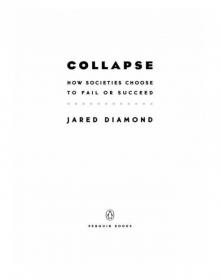 Collapse: How Societies Choose to Fail or Succeed
Collapse: How Societies Choose to Fail or Succeed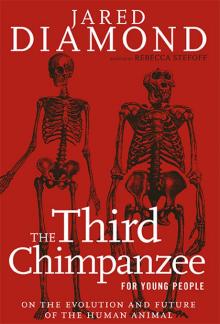 The Third Chimpanzee: The Evolution and Future of the Human Animal
The Third Chimpanzee: The Evolution and Future of the Human Animal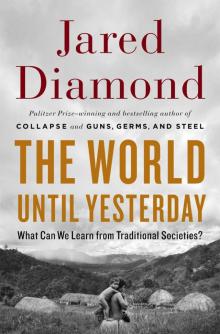 The World Until Yesterday: What Can We Learn From Traditional Societies?
The World Until Yesterday: What Can We Learn From Traditional Societies?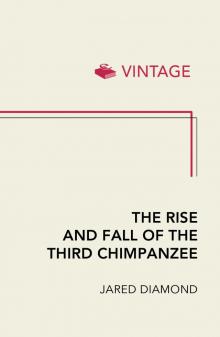 The Rise and Fall of the Third Chimpanzee
The Rise and Fall of the Third Chimpanzee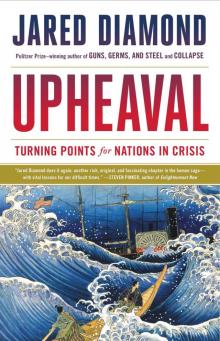 Upheaval: Turning Points for Nations in Crisis
Upheaval: Turning Points for Nations in Crisis Guns, Germs, and Steel
Guns, Germs, and Steel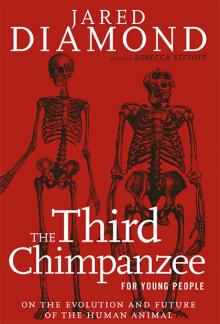 The Third Chimpanzee for Young People
The Third Chimpanzee for Young People Why Is Sex Fun?
Why Is Sex Fun?